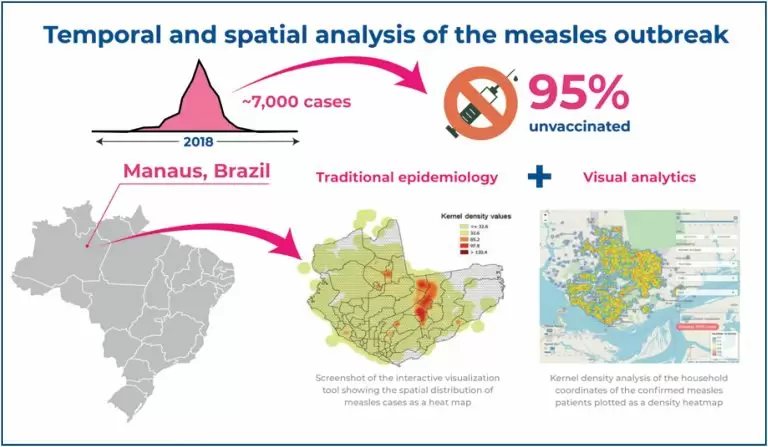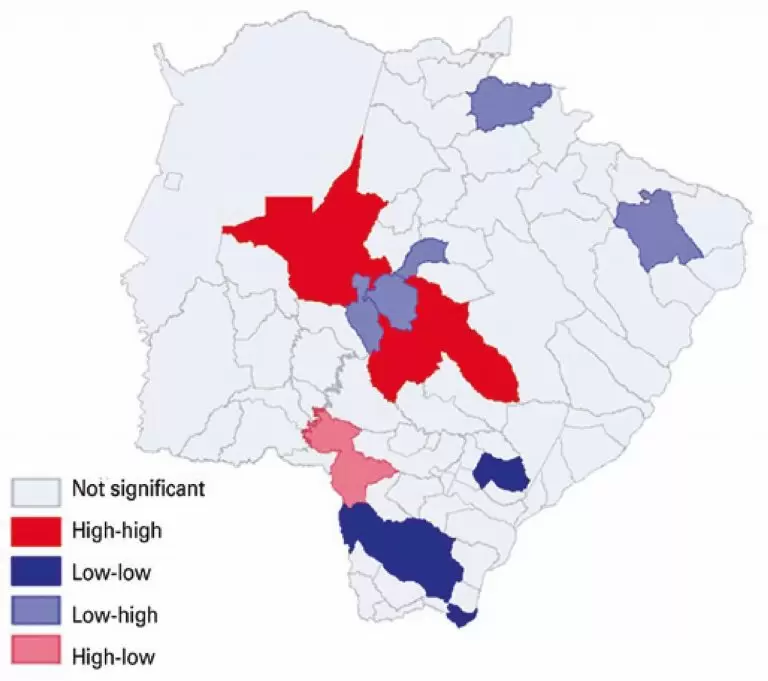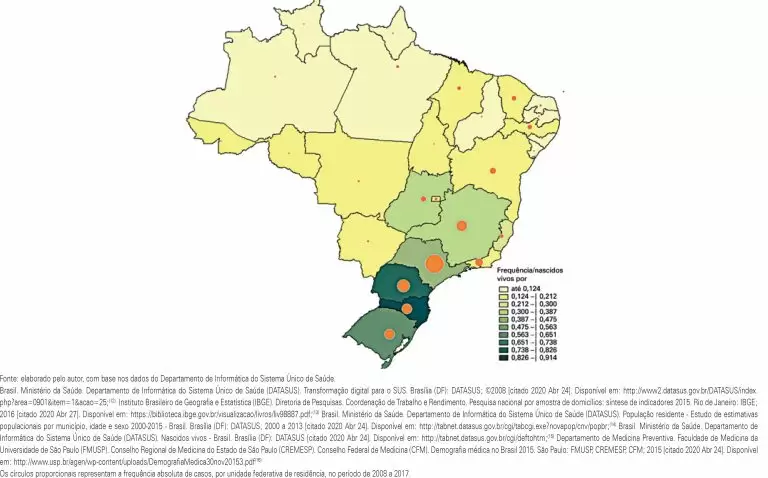25/nov/2025
Smartphone-based retrospective analysis for malaria hotspot detection
DOI: 10.31744/einstein_journal/2025AO1826
Highlights ■ Patients gave informed consent to share GPS history from their smartphones. ■ Anonymized GPS data revealed stay points and malaria infection hotspots in Manaus. ■ Hotspots guided health agents to mosquito breeding sites, aiding malaria control. ABSTRACT Objective: To leverage passively collected retrospective smartphone location data to accurately identify malaria transmission hotspots through the development of a novel tool, the Sickness Positioning System. Methods: We collected anonymized location history data from over 200 malaria-infected individuals using Google Takeout. […]
Palavras-chave: GPS; Malaria; SiPoS; Smartphones; Análise Espacial
19/mar/2024
Temporal and spatial analysis of over 7,000 measles cases outbreak from 2018 to 2019 in the Brazilian Amazon
DOI: 10.31744/einstein_journal/2024AO0931
Highlights Approximately 95% of the measles cases reported occurred in unvaccinated individuals. O ur findings revealed that socioeconomic factors influence the spread of the disease. Visual analytics enhanced epidemiological analysis. ABSTRACT Objective: This study aimed to present a temporal and spatial analysis of the 2018 measles outbreak in Brazil, particularly in the metropolitan city of Manaus in the Amazon region, and further introduce a new tool for spatial analysis. Methods: We analyzed the geographical data of the residences of over […]
Palavras-chave: Age distribution; Surtos de doenças; Geographic information systems; Measles; Prevalência; Análise Espacial; Vacinação
06/maio/2022
Incidence of hemoglobinopathies and spatialization of newborns with sickle cell trait in Mato Grosso do Sul, Brazil
einstein (São Paulo). 06/maio/2022;20:eAO6535.
Ver Artigo06/maio/2022
Incidence of hemoglobinopathies and spatialization of newborns with sickle cell trait in Mato Grosso do Sul, Brazil
DOI: 10.31744/einstein_journal/2022AO6535
ABSTRACT Objective To evaluate the incidence of variant hemoglobins of newborn samples from the Neonatal Screening Center in the state of Mato Grosso do Sul, Brazil, and to analyze the distribution and spatial autocorrelation of newborns with sickle cell trait. Methods Samples from 35,858 newborns screened by the Neonatal Screening Center. The samples with inconclusive diagnosis were submitted to electrophoretic, chromatographic, cytological and molecular analyses. The spatial distribution analysis of newborns with sickle cell trait was performed by spatial autocorrelation. […]
Palavras-chave: Troca materno-fetal; Triagem neonatal; Residence characteristics; Sickle cell trait; Análise Espacial
25/nov/2021
Epidemiologia e custos do tratamento cirúrgico da displasia do desenvolvimento do quadril no Sistema Único de Saúde em uma década
einstein (São Paulo). 25/nov/2021;19:eGS5625.
Ver Artigo25/nov/2021
Epidemiologia e custos do tratamento cirúrgico da displasia do desenvolvimento do quadril no Sistema Único de Saúde em uma década
DOI: 10.31744/einstein_journal/2021GS5625
RESUMO Objetivo: Descrever e analisar a epidemiologia e os custos do tratamento cirúrgico da displasia do quadril no Sistema Único de Saúde. Métodos: Estudo ecológico analítico da série temporal e distribuição geográfica dos casos de tratamento cirúrgico da displasia no Brasil. Foram avaliadas: frequências, taxas de casos e fatores de associação. Taxas de correlação, mapas de frequência e fluxos são apresentados e discutidos. Resultados: No período, foram internados 14.584 pacientes com displasia segundo o Departamento de Informática do Sistema Único […]
Palavras-chave: Análise Espacial; Brasil; Custos e análise de custo; Displasia do desenvolvimento do quadril; Estudos de Séries Temporais; Prevalência; Sistema Único de Saúde






